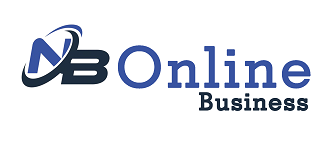Every business begins with tight budgets and lean operations. Free accounting tools offer an attractive way to manage finances without adding to overhead costs. But as your business grows, these tools can become limitations rather than enablers. Understanding when to upgrade is crucial for sustainable growth.
The Appeal of Free Tools
Free financial tools serve an important purpose in the business ecosystem. They democratize access to essential capabilities that once required expensive software or professional services.
A billing generator lets startups create professional invoices immediately without investment. For Indian businesses, a GST billing generator ensures compliance with tax regulations from day one. These tools provide genuine value, especially for bootstrapped ventures and solo entrepreneurs testing business ideas.
The advantages are clear: zero cost, immediate access, no commitments, and simplicity that reduces the learning curve. For businesses processing fewer than 50 transactions monthly, free tools often suffice.
The Hidden Costs of Free
“Free” doesn’t mean cost-free. As transaction volumes increase, limitations become apparent and create hidden costs:
Time costs: Manual data entry for each invoice, expense, and transaction multiplies as your business grows. What takes 10 minutes weekly for a new business becomes hours of administrative burden at scale.
Error costs: Without automation, human error is inevitable. Incorrect tax calculations, missed invoices, or data entry mistakes can result in compliance issues, customer disputes, or lost revenue.
Opportunity costs: Time spent on manual bookkeeping is time not spent on growth activities—acquiring customers, developing products, or building partnerships.
Scalability costs: Free tools rarely integrate with other business systems. As you add e-commerce platforms, payment processors, or inventory management, disconnected systems create data silos and reconciliation nightmares.
Signs You’ve Outgrown Free Tools
Recognizing when to upgrade is essential. Watch for these indicators:
Volume thresholds: Processing more than 50-100 transactions monthly makes manual tools inefficient. The time savings from automation justify the investment.
Multiple revenue streams: If you’re selling through multiple channels (website, marketplace, physical locations), tracking everything manually becomes unsustainable.
Team growth: When you hire your first employee, you need proper financial systems for payroll, expense management, and access controls.
Compliance complexity: Multiple tax registrations, international transactions, or regulatory reporting requirements exceed the capabilities of basic free tools.
Growth ambitions: If you’re seeking investors or loans, professional financial statements and audit trails become essential. Free tools rarely provide the reporting required.
The Professional Platform Decision
Upgrading to comprehensive accounting software is a strategic investment, not just an expense. White label accounting and billing software provides enterprise-grade capabilities—automated invoicing, expense tracking, payroll, tax management, and real-time reporting—that transform financial operations.
For businesses wanting branded solutions or service providers serving multiple clients, a whitelabel accounting app offers professional platforms under your own brand across web, iOS, and Android.
These solutions provide what free tools cannot: automation that scales, integrations with your business ecosystem, compliance management, multi-user collaboration, real-time insights, and professional reporting that supports strategic decisions.
The Smart Upgrade Path
The transition from free to paid doesn’t have to be disruptive. Here’s a practical approach:
Phase 1: Start with free billing and GST generators while building your customer base and validating your business model.
Phase 2: As transaction volumes reach 50+ monthly, explore accounting platforms with free trials. Test features and ensure they meet your needs.
Phase 3: Migrate data during a slow period, preferably at month or quarter-end for clean bookkeeping transitions.
Phase 4: Use your new platform for one complete business cycle (monthly or quarterly) while keeping free tools as backup, ensuring accuracy before full commitment.
Calculating the ROI
Consider this scenario: You spend 5 hours weekly on manual bookkeeping using free tools. Your time is worth $50/hour (conservatively). That’s $13,000 annually in opportunity cost.
A professional accounting platform costs $30-100 monthly ($360-1,200 annually) and reduces that 5-hour weekly commitment to 30 minutes. You’ve saved 4.5 hours weekly—234 hours annually worth $11,700—while gaining better insights, fewer errors, and professional reporting.
The ROI is obvious, and this calculation doesn’t account for reduced errors, improved cash flow management, or strategic benefits from better financial visibility.
The Bottom Line
Free tools serve their purpose in business’s earliest stages, but growth demands professional systems. The question isn’t whether to upgrade—it’s when.
If you’re spending more than a few hours weekly on financial administration, experiencing data entry errors, or feeling limited by your tools’ capabilities, you’ve already passed the upgrade threshold.
Smart businesses view accounting software as infrastructure investment, not overhead. The right platform doesn’t cost you money—it saves time, prevents costly mistakes, and enables growth you couldn’t achieve with manual systems.
Start free, but don’t stay there longer than necessary. Your business growth depends on systems that scale with your ambitions.







